Is the Oak Harbor Housing Market Getting Squishy?

Written by: Kristen Stavros
16 September 2021
There is a general feeling amongst brokers that the Oak Harbor market has softened up just a bit. As Branch Manager and Co-owner of Windermere Whidbey Island I pay close attention to what my brokers are seeing and feeling out there in the market. When I begin to sense a theme I go to the numbers to see if they are telling the same story.

I’ll be really curious to see how these numbers change when we can add September data to them but I’m seeing the teensiest sign that there may be some easing.
For the first time all year, we’ve seen a dip in closed sales in August.
At the same time, new listings continue to rise every month.
Average days on market has plateaued.
Does this mean buyers can start getting homes for less $$$?
The answer is emphatically, NO. As you can see from the graphs below prices continue to climb, inventory is still at a record low, and homes are still moving off the market incredibly fast. This just means that instead of being up against 10 other buyers you now may be up against just 2-3 other qualified buyers. Instead of great homes going for up to 10-20% over list price, the good ones may just end up 5-8% over list. The pressure on buyers is still decidedly strong but the dial has been turned down ever so slightly.
Average Price Per Square Foot.
Months’ Supply of Homes (based on closed sales).
Average Days on Market.
Sellers still have a fantastic advantage in this market but things are changing weekly so we are encouraging sellers to not get too greedy or assured because doing so may mean you overprice the market, lose the opportunity to garner multiple offers out of the gate, and ultimately make less profit on your home.
Working with a smart and sophisticated listing agent has never been more important in the previous 3 years than it is RIGHT NOW. You need someone who is really going to take their time analyzing the market against your specific home before giving you pricing advice. Call us today to be connected with a market pricing expert!
This analysis focuses just on the Oak Harbor market but we have the same analysis going on for all of Whidbey Island! If you are interested in knowing more about any aspect of Whidbey Island real estate let us know and we are happy to share.
Bird Watching on Whidbey Island


50 miles South of the U.S./Canada border and 25 miles North of Seattle lies Whidbey Island, an incomparable destination for nature lovers and bird enthusiasts. On Whidbey, you can get lost for hours and find yourself mesmerized not only by incredible views but by a breathtaking variety of birds.
Whidbey Boasts 148 miles of winding shoreline, 6 state parks, 4 lakes, hundreds of miles of trail, and a ridiculous variety of habitats from bogs to estuaries to the prairie. It is not surprising then that Whidbey accommodates roughly 250 resident and migrant bird species.

Birdwatchers will declare some of the best times to watch for birds on Whidbey are:
Spring:
Late April through May you can expect to be woken early by the Songbirds singing a pleasant tune.

Fall:
Late July through September It is hard not to miss fat red-breasted Robins filling the apple trees and spot migrant visitors from the north like wigeons, ducks, coots, waterfowl, and red-tailed hawks.

Winter:
November through mid-March is a great time of year to watch for Northern Shrike, Bald Eagles, and other raptor-type birds.

Best places for birdwatching:
If you are just trying to take advantage of easily accessible shoreline almost any time of year works. Some of the best places to watch for shorebirds birds on Whidbey Island are Penn Cove, Keystone Landing, Fort Casey State Park, and Dugualla Bay.
If you don’t live on Whidbey and are coming just for birdwatching be sure to schedule more than one day for viewing. Plan time so you can experience multiple locations, each with its unique features. To better understand all the places you can access the shoreline you really need to buy Getting to the Waters Edge! We sell it at our Windermere offices both in Oak Harbor and Coupeville.
Frequently asked questions:
Some people wonder if there is a time of day that birds are most animated. Typically speaking most birds are bustling around sunrise and sunset but that rule does not apply to all birds. For example, the morning is typically the best time for spotting diurnal species, while nocturnal species are generally spotted in the evening, but it really depends on the bird and the time of year.
Whidbey Island is native to species like Eagles, Northern Harriers, wading birds, loons, grebes, sea ducks, including Harlequin Ducks, dabbling ducks, Black Oystercatchers, Common Yellowthroats, Marsh Wrens, and more. It is also is a temporary home for migrant birds who frequent the island seasonally for the island’s ideal breeding habitats. But do not be fooled. Some birds like robins, hawks, cardinals, finches, sparrows, and more stay here all year but they seem to “return” because they become active again during the spring through fall seasons after they have bundled down in their nests and shelters during the winter.
Additional resources:
To learn more about the birds that can be spotted on Whidbey and a guide for when you will likely catch a glimpse check out this detailed Whidbey Island Bird List created by the Whidbey Audubon Society.
Here are some of our favorite spots on Whidbey to watch for birds let us know your favorite spots in the comments below.
Staying Cool This Summer

Staying Cool This Summer

Water activities are something particularly special to Whidbey Island. After all, we are completely surrounded by water. With the sun making more and more guest appearances in the sky you can place a good bet on the expectation of increased activity on the waves. Between kayaking, paddleboarding, sailing, and more; Whidbey shores offer quite a bit of enjoyment for those willing to get wet.
Below are just a few water activities frequently seen here on Whidbey.
Kayaking
Kayaking is easily an island favorite when it comes to water sports. The flexibility of kayaking regardless of weather and the ability to do it alone is a HUGE plus for many. Don’t have your own Kayak? Rent one from Whidbey Island Boats and Boards where you pick the location and they deliver the kayaks and paddleboards anywhere on the island.


Tubing
Another island favorite, especially in the summer, is tubing! The wonderful thing about tubing is the community feel to it. It’s a great activity that brings people together and almost always results in a few humorous stories.
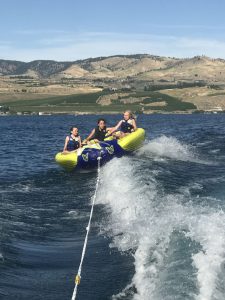
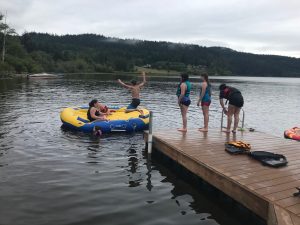
Water Skiing
Want to kick tubing up a notch? Water skiing is for you! This sport requires a bit more resilience and core strength, but once you get it down you are sure to leave the water with some epic pictures of yourself.
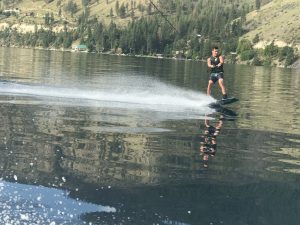
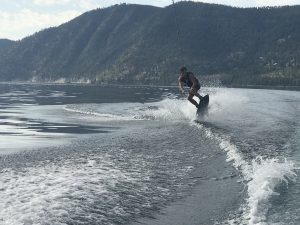
Paddleboarding
Paddleboarding is a slightly newer interest on the island, but well deserving of the hype. This sport is made for those who simply want to enjoy the water. Sit, stand, lay down, it doesn’t matter! Paddleboarding allows you to enjoy the sea the way you want to.

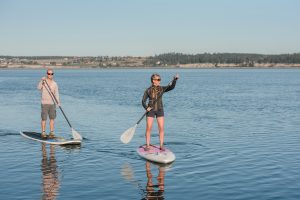
Sailing
Sailing is a Whidbey Island classic. There is a long history of sailing on Whidbey that has been passed down from generation to generation.

Boating

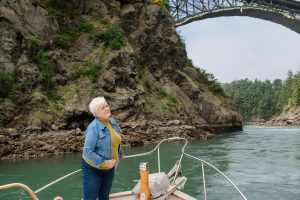
Another beloved activity on Whidbey is boating. Avid boaters will get out on the water any chance they get to relax atop the calm waters surrounding Whidbey. Take in the scenery, sunbathe, read a book, or play a game. All are welcomed while relaxing at sea.


Fishing
Perhaps fishing is more up your alley for a fun relaxing time. The great thing about fishing is that you can do it by boat or by land and Whidbey offers a plethora of opportunities.


Splash Pad and Lagoon at City Beach
Maybe you have littles that can’t quite participate in some of the other activities yet. Oak Harbor Windjammer park offers a family-friendly splash pad and lagoon to keep the whole family cool on these hot summer days.


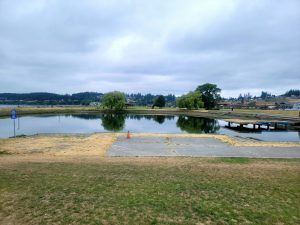
If you enjoyed this blog, you might also enjoy:
Best Places to Whale Watch on Whidbey

Discover the Best Places to Whale Watch
When it comes to natural wonders, Whidbey Island is unbelievably blessed. With expansive undeveloped areas, nine state parks, and views that take your breath away, it’s hard to imagine it could get any better.

But it does!
In addition to our incredible outdoor opportunities for explorers, we are one of the few places in the world where land-dwellers have an opportunity to get a glimpse of some spectacular mammals of the sea. Puget Sound’s cold and nutrient-rich water makes it the perfect place for whales to roam. Although you could spend the money to board a whale-watching boat and find the mammals out on the water, boats aren’t always required when you’re on Whidbey.
Below are the top 5 places to see whales from land on Whidbey!
West Beach
At the west-most point of Oak Harbor lies a stretch of beach beloved by wanderers and sea life alike. With wide-open views and miles of ocean just off the shore, it’s not hard to see why West Beach is one of the best places to see whales near Whidbey.
Penn Cove
The nutrient-rich water of Penn Cove cultivates a thriving ecosystem for small and large sea life. It’s this sea life in the form of ghost shrimp and fat seals that attracts the attention of gray whales and transient Orca alike. It’s not uncommon for the residents of Penn Cove to see a gray whale’s tail break the surface of the water as they dig in the mudflats for shrimp or a full-on chase between a stealthy Orca and a seal.
Hidden Beach
What this public beach lacks in amenities it makes up for with view and privacy. On a sunny day, beach-goers have the opportunity to see Camano Island sitting peacefully across the Saratoga Passage and – if they come at just the right time – maybe even a whale!
Lagoon Point
Just north of this charming seaside community is a county park boasting nothing more than public access to the Lagoon Point community beach. Luckily access to the beach is really all you need to catch a glimpse of traveling orcas or scavenging grey whales.
Seawall Park
Hidden below the streets of downtown Langley is a quaint little park with beautiful art, well-maintained landscaping, and a spectacular view of the Saratoga Passage. Onlookers often have the wonderful treat of seeing a whale pass or even watch them feed in the massive ghost shrimp beds. If you do, don’t forget to ring the Whale Bell!
Bonus: Your own back porch?
Can you say “waterfront property”? Yes, please! Our beautiful island has many waterfront homes and properties with beautiful views of Puget Sound. How amazing would it be to sip coffee on your own patio while enjoying pods of orca passing by or gray whales feeding on the beach right in front of you? If this sounds like your dream, give us a call today!
Now, remember, if you do see a whale you should report it to the Orca Network! Reporting sightings to the Orca Network helps with scientific efforts and helps other whale watchers like yourself!
If you liked this, you might also like:
The Gray Whales Return to Whidbey

Gray Whales Return to Whidbey
As the cold melts away and flowers start to bloom again, Whidbey Island is blessed with a rare and wonderful gift. Many people hike to the very tip of a bluff or edge of the waves hoping to catch a glimpse of this phenomenon. Then it happens – water spurts into the air from nowhere and at the surface, you can just barely see a tail appear.
Oh, what a whale of a tale to tell….

Spring brings with it a special excitement for this curious island. As the waters warm, they welcome back one of our favorite travelers; the gray whale! Migrating every year from their winter home in Mexico to the wild waves of Alaska; gray whales often make a special stop within the waters of the Puget Sound.
As food foragers, the gray whale “dig[s] up the mudflats [on the ocean floor] for shrimp and worms.”1 They then filter these small creatures through their baleen, or whalebone, which acts as a strainer to keep the food in their mouth and push out all the water.2
Given their foraging requirements, gray whales’ proximity to the shore and repetitive presence in the Puget Sound comes as little surprise. While the average depth of the Pacific Ocean is a little over 12,000 feet, Puget Sound’s deepest point is approximately 930 feet. The shallow waters of the sound serve as a great benefit to this massive mammal that relies on both oxygen and access to the ocean floor in order to survive.
On Whidbey Island, we take great joy in the return of these travelers every year. Many islanders and tourists alike find their way to the water’s edge and peer into the waves in hopes of a glimpse. Luckily, sightings are not at all uncommon on the island. To commemorate the love we have for these ocean friends, both Coupeville and Langley have erected what is called a “Whale Bell.” These bells have a simple instruction: “See a whale, ring the bell.” These bells serve as both a monument to the whale’s impact on our island culture and a creative way to notify others of the whale’s presence so they can also look out and see!
View this post on Instagram
Every year the town of Langley has pulled together to commemorate the beginning of whale season. Complete with a parade, this festival speaks volumes of the love islanders have for their precious whales. Unfortunately, the event has been canceled this year due to covid for the health and safety of the community continue to check back here for updates. While the ring of the bell brings joyous memories of years past residences and travelers alike look forward to a day where gatherings return to celebrate these incredible creatures.
References
- “Gray Whales.” Orca Network, https://www.orcanetwork.org/Main/index.php?categories_file=Gray%20Whales
- “Gray Whales.” National Geographic, https://www.nationalgeographic.com/animals/mammals/g/gray-whale/
You might also like:
Get the Buck Out of My Yard

Have you ever been standing there admiring your gardens when a deer walks in and decides it is time for lunch? So have we.

They are the wild and majestic creatures of Whidbey Island, often found in the peaceful pastures of Ebey’s Landing or beneath the cooling tree shade of the state parks. They are elegant, graceful, mesmerizing… and frankly a pain in the arbor.
Oh deer, oh deer, oh deer.
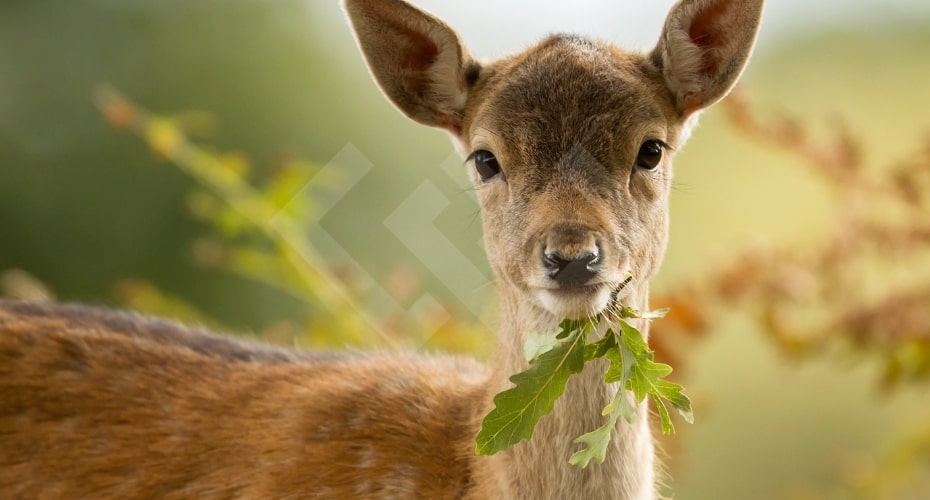
Don’t get us wrong, we LOVE our Whidbey Island deer and are grateful to live in a place where wildlife feels welcomed. However, if you’ve been working hard cultivating that garden all year long, the last thing you are interested in is a handful of fauna munching on the fruit of your labor. To top it off, deer can carry ticks with Lyme disease which can be extremely harmful to both humans and their dogs.
Sorry Bambi, but no one messes with mans’ best friend.
We’ve done a little research and decided to give you a hand with those pretty, yet pesky visitors.
5 pro-tips to get the grazers out of your garden.

- Cut ‘em Off! – It might seem like the most obvious solution, but fences are always a great first step to keeping out unwanted guests. Although deer are great jumpers, the additional effort required might just be enough of a deterrent. < We’re all a little lazy.
- Don’t Plant Tasty Treats – Deer LOVE plants rich in nutrients, moisture, and basically anything else your doctor said you should eat more of. This includes almost all produce plants as well as leafy ivy and bright, water-filled flora. Instead of these, try planting pungent flowers like lavender with greenery that is thorny, hairy, or prickly. You can also use these less desirable plants as a natural barrier for the tastier ones. If all deer see and smell is lambs’ ear and snapdragons, odds are they won’t investigate much further.
- Let Rover Out More – Chances are your dog is like most others and DOES NOT see grazing deer as welcome guests. Barking dogs are a big deterrent for deer. Who wants to eat with someone yelling at you? Eventually, the deer will likely decide your home isn’t a safe place to eat and won’t return.
- Shine a Light on the Situation – Deer are more skittish than the commitment-phobe you dated in college. Installing motion-sensitive floodlights can often leave a deer stunned and anxious to get away as fast as they can.
- Live a Little! – Although we might find them beautiful and nice to look at, deer aren’t that excited about us. Chances are if a deer sees you out and about in the yard they will simply turn around and find someone else’s garden to plunder. So, get outside more! See this as an opportunity to re-imagine your yard and incorporate more outside living space. Your health and your hydrangeas will thank you.

 Facebook
Facebook
 X
X
 Pinterest
Pinterest
 Copy Link
Copy Link


